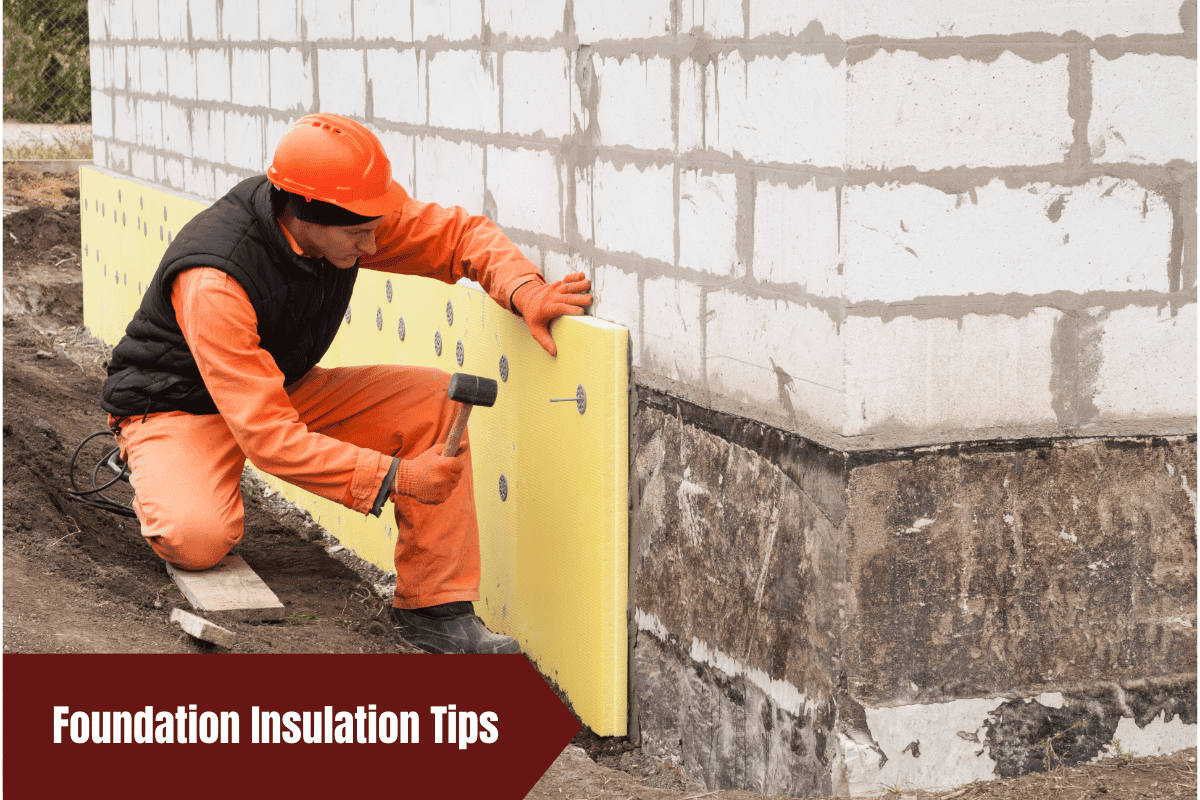Hey there, fellow Home warriors! Let’s talk about something almost as exciting as watching paint dry—foundation insulation. I know, I know. It’s not exactly the stuff of weekend thrillers, but stick with us. What if we told you that nailing this could slash your energy bills, banish basement drafts, and even keep your floors from feeling like Arctic tundra in January? Suddenly, insulation sounds a little sexier, right? At Golden Bay Foundation Builders, we’ve seen firsthand how a well-insulated foundation transforms Homes from chilly money pits into cozy, efficient havens. Let’s break this down together—no hard hats required.
Why Foundation Insulation Matters More Than You Think
Picture this: It’s winter. You’re sipping cocoa by the fire, but your toes? They’re frozen. Blame your foundation. Uninsulated foundations let heat escape like a screen door on a submarine. Worse, moisture creeps in, inviting mold, mildew, and that lovely “damp basement smell” (yum). Insulation isn’t just about comfort—it’s your home’s first line of defense against energy waste and structural headaches.
Here’s the kicker: Insulation also plays nice with other foundation fixes. For example, if you’ve had soil stabilization services done to prevent shifting ground, pairing it with insulation locks in stability and efficiency. Win-win.
Types of Foundation Insulation: What’s Right for Your Home?
Not all insulation is created equal. Your choice depends on your foundation type, climate, and whether you’re building new or retrofitting. Let’s geek out on the basics:
Rigid Foam Boards: The Overachiever
- Best for: Exterior insulation, floating foundations, or slab-on-grade homes.
- Why we love it: High R-value (translation: superb heat resistance), moisture-resistant, and easy to install. Just don’t let it hang out uncovered—UV rays will ruin its day.
Spray Foam: The Custom Fit
- Best for: Crawl spaces, irregular gaps, or sealing around pipes.
- Pro tip: Closed-cell spray foam doubles as a moisture barrier. Perfect for crawl space repair projects where dampness is Public Enemy No. 1.
Fiberglass Batts: The Budget Buddy
- Best for: DIYers tackling interior basement walls.
- Watch out: If your foundation has even a hint of moisture, skip this. Wet fiberglass = sad, moldy mess.
FYI
, if you’re staring at your foundation like “What even is this thing?”, schedule one of our foundation inspections. We’ll ID your foundation type and recommend insulation that won’t quit.
Common Foundation Issues (and How Insulation Can Help)
Let’s get real: Insulation isn’t a magic wand for pre-existing problems. But paired with the right repairs, it’s a game-changer.
Cracked Walls: The Silent Scream
Cracks in your foundation walls? That’s your home’s way of saying, “Help!” Before you insulate, tackle the root cause—like soil pressure or water damage. Foundation underpinning services can stabilize the structure, and then insulation seals the deal.
Earthquake Anxiety? Try Seismic Retrofitting
Living in shaky territory? Seismic retrofitting strengthens your foundation against tremors. Add insulation afterward to keep warmth in and tremors out (well, mostly).
The Dreaded Crawl Space
A neglected crawl space is basically a VIP lounge for pests and rot. Crawl space repair + insulation = a dry, energy-efficient buffer zone. Trust us, your heating bill will thank you.
Pro Tips for DIYers and When to Call the Pros
Got a toolbox and a can-do attitude? Here’s how to avoid rookie mistakes:
- Seal gaps first. Insulating over drafts is like putting a Band-Aid on a leaky pipe.
- Mind the vapor barrier. Install it on the warm side (usually facing inward) to prevent condensation.
- Don’t block ventilation. Crawl spaces need airflow—unless you’re aiming for a mold farm.
But hey, know when to fold ‘em. If you spot major cracks, uneven floors, or mystery moisture, call Golden Bay. Why risk turning a DIY win into a “Why did I think I could do this?!” meltdown?
Golden Bay’s Go-To Solutions for Long-Term Stability
We’ve been around the block (and under a few crawl spaces). Here’s our cheat sheet for bulletproof insulation:
- Start with a foundation inspection. Surprises are great for birthdays, not so much for home repairs.
- Pair insulation with preventative fixes. Soil stabilization services + rigid foam = a dynamic duo.
- Think long-term. Seismic retrofitting or piering might cost more upfront, but they’ll save you cash (and stress) down the road.
Case in point:
Last year, we helped a client insulate their floating foundation after years of chilly winters. Now, their home stays toasty, and their energy bill dropped 20%. Not too shabby, huh?
Insulation Comparison Cheat Sheet
| Type | Best For | R-Value | Cost |
|---|---|---|---|
| Rigid Foam Boards | Exterior, slab homes | 4–6 per inch | $$$ |
| Spray Foam | Crawl spaces, gaps | 6–7 per inch | $$$$ |
| Fiberglass Batts | Interior walls | 3–4 per inch | $ |
FAQs: Your Burning Questions, Answered
Q: How much does foundation insulation cost?
A: It varies, but expect 1,500–1,500–5,000 depending on materials and foundation size. Pro tip: Bundle it with repairs (like crawl space repair) for discounts.
Q: Can I insulate an old foundation?
A: Absolutely! Just fix issues like cracked walls or moisture first. Insulating over damage is like putting lipstick on a bulldog—it doesn’t solve the problem.
Q: Will insulation prevent drafts completely?
A: It’ll help a ton, but pairing it with air sealing is key. Think of them as Batman and Robin.
Wrapping Up: Don’t Let Your Foundation Freeze Its Assets
Foundation insulation might not be glamorous, but neither is shivering through winter or flushing cash down the drain on heating. Whether you’re a DIY daredevil or prefer to leave it to the pros (hi, that’s us!), the payoff is real.
At Golden Bay Foundation Builders, we’re all about fixing foundations and saving you from “I wish I’d done this sooner” regrets. Spot cracks? Drafts? Mysterious puddles? Give us a shout. Let’s make your foundation the cozy, rock-solid hero your home deserves.
P.S. Seriously, don’t ignore that crawl space. You’ve been warned.
